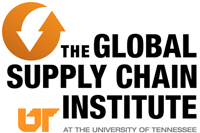Best Practices for Supply Chain Transparency

A new study from the University of Tennessee, Knoxville’s Global Supply Chain Institute outlines the best practices for leveraging transparency in supply chains for financial profit.
The University of Tennessee, Knoxville’s Global Supply Chain Institute study describes six key practices: embracing sustainability as a major business driver, developing a culture of transparency, partnering with sustainable suppliers, ensuring traceability to enable transparency, finding your transparency sweet spot and employing outside auditing partners.
The company must first have commitments to sustainability as a major business driver and a culture of transparency driven by executive leadership.
The report defines these two elements as supply chain integrity.
“Companies don’t need to have their sustainability practices completely figured out,” said Mike Burnette, director of the Global Supply Chain Institute and a co-author of the study, Creating a Transparent Supply Chain.
“In fact, many see it as a work in process. But it is important to establish and stick to a set of ideals and goals on which they communicate progress.”
While marketing incentives often provide the motivation for transparency, UT’s study notes that consumer demand for sustainability creates risk in the supply chain.
Partnering with sustainable suppliers and ensuring that product materials are traceable are prerequisites to increased communications with the public.
“Consumers want to know where a product came from, all the way to the cashmere goat herd on the slopes of the Himalayas,” Burnette said.
“A lack of ability to provide that kind of information in the face of safety or environmental violations can create a negative perception of the brand that may require immediate remediation and could take a brand years to recover from, if at all.”
Poor traceability opens companies up to the possibility of slave or child labor, product contamination, pollution of waterways or the presence of conflict materials in their supply chains.
Divulging supplier partnerships often involves proprietary business information, however, and the report advises finding a sweet spot in communications that brings about trust for both suppliers and consumers.
The SC Johnson Company, one of the best-practice companies interviewed and the sponsor of the report, found that sweet spot allows much greater communication than executives had expected.
“Last year we took an unprecedented step in the industry by launching the first product with 100 percent of the fragrance ingredients disclosed,” said Kelly M. Semrau, senior vice president for global corporate affairs, communication and sustainability at SC Johnson.
“We believe consumers should know a product’s ingredients so they can make educated choices about what they bring in to their homes for their families.”
SC Johnson worked with the International Fragrance Association to establish the ingredients’ safety and sustainability, exemplifying the report’s final recommendation: employ outside auditing partners.
“Companies must choose these partners carefully, but they can never hope to replicate the databases of industry information that sustainability coalitions compile,” Burnette said.
Creating a Transparent Supply Chain is the third installment in the “Innovations in Supply Chain” series from UT’s Haslam College of Business supply chain faculty.
Extending the Boundary of Supply Chain Knowledge
Although academic research on supply chain transparency is still in its infancy, a number of relationships are beginning to emerge that managers should note.
These relationships are summarized below to motivate managers to consider the current state of supply chain transparency capabilities at their own firm and how to move them forward.
- Supply chain visibility has a direct impact on the quantity and quality of supply chain traceability and transparency capabilities. The ability to map the tiers of the supply chain for individual products and understand the firm’s supplier and distribution network from raw materials to end products is at the very heart of providing high levels of transparency to consumers and other stakeholders.
- Traceability has a direct impact on supply chain disruption recovery and recall management capabilities at a firm. While supply chain visibility is important for providing a transparent supply chain, firms must also be able to provide traceability for products that are already fielded. This means it is often necessary to retrace the steps of a product’s evolution and manufacturing, including sources of supply and knowledge about the actual content and material in a particular product or lot of products.
- Transparency has a direct impact on consumer trust and a firm’s sustainability performance. Good supply chain visibility and traceability not only allow firms to recall and recover fielded products in the event of problems, but they also enable firms to transparently provide information to customers and stakeholders about the nature and origin of products when requested. Such transparency can build increased levels of trust with end customers about the sustainable performance of the firm’s supply chain.
- The structural and moral components of supply chain integrity underlie and directly influence the competencies of visibility, traceability, and transparency. Firms with high levels of moral and structural integrity will aim to do good while doing well. Once a firm has these capabilities, managers will be motivated to openly share such information with their stakeholders.
- Firms with high levels of supply chain integrity, visibility, traceability, and transparency competencies will be able to mitigate supply chain sustainability risks, leading to competitive advantages in the marketplace (see graphic below). Firms face a number of supply-side risks including slave labor, product contamination, and environmental damage at supplier locations. Building a transparent supply chain will proactively ensure consumers that the firm is achieving high levels of sustainable performance.
Download the Paper: Creating a Transparent Supply Chain Best Practices
Article Topics
The Global Supply Chain Institute News & Resources
Amazon Plans to Expand Boston Tech Hub with Additional 2,000 Technology Jobs New Supply Chain Technology Best Practices Study Assesses Five Technologies to Impact the Supply Chain in the Next 5 Years Study Identifies Transportation Best Practices & Megatrends to Adopt by 2025 Transportation 2025 Megatrends & Current Digital Best Practices Creating a Transparent Supply Chain Best Practices Best Practices for Supply Chain Transparency More The Global Supply Chain InstituteLatest in Supply Chain
Walmart Unleashes Autonomous Lift Trucks at Four High-Tech DCs Ranking the Best Countries for Private Business in EMEA Frictionless Videocast: The Importance of Water at the U.S./Mexico Border with Commissioner Maria-Elena Giner, International Boundary and Water Commission Why are Diesel Prices Climbing Back Over $4 a Gallon? Plastic Pollution is a Problem Many Companies are Still Ignoring Luxury Car Brands in Limbo After Chinese Company Violates Labor Laws 80% of Companies Still Unsure How to Best Leverage AI, Study Finds More Supply Chain















